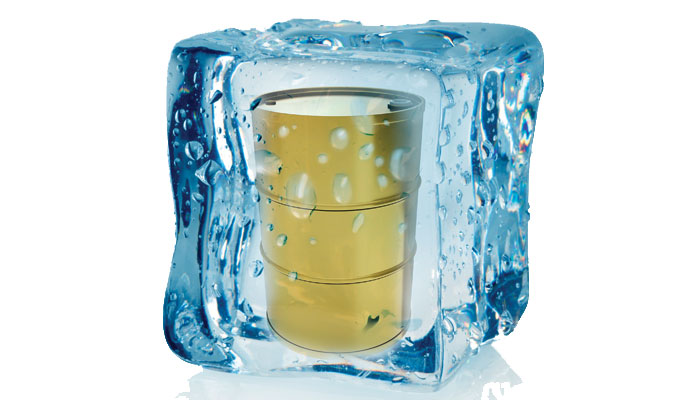All
Kerosene Doesn’t Winterize New Distillates Well
by Gary Pipenger, Research Laboratories Inc.

Fuel Characteristics Have Changed
Blending kerosene (No. 1-D fuel) into diesel fuel has been used for many years as a “winterization” technique. This method worked (somewhat) in the past because the kerosene was a lighter-weight fuel that contained less waxy paraffin content than the diesel fuel. The resulting mixture of kerosene and diesel fuel had lower cold flow properties (Cloud Point, Pour Point and CFPP or Cold Filter Plugging Point) than the No. 2-D diesel fuel.
Today’s diesel fuels (and kerosene) are different from those fuels of the past. The diesel fuels and kerosene produced today are much less compatible because of the changes in crude oil sourcing and refinery processes used to produce these fuels.
Diesel fuels of the past responded extremely well to kerosene added to them and the cold flow properties were reduced accordingly. Unfortunately, that is not the case today.
The changes in the chemical and physical makeup of today’s diesel fuels and kerosene produced from heavier Canadian tar sand crudes and Bakken Basin shale formation crudes are significant. As a result, these changes produce much less cold flow operability protection improvement when the two fuels are blended together.
Even adding 30 percent kerosene to a diesel fuel will only reduce the cold weather operability (CFPP) result of the No. 2-D fuel about 7° to 11° F. A “good” cold flow improver will provide much more protection.
It is also noteworthy that the ‘right’ cold flow improver additives available today can dramatically lower the cold flow operability of No. 2-D fuels at substantially less cost compared to blending kerosene.
Other Reasons Not to Blend Kerosene
It should be noted that blending kerosene (or other light distillates) into distillate fuels reduces the BTU content (heat energy) of the final mixture, because kerosene contains a much lower BTU energy content compared to distillate fuels. This means kerosene-blended distillate fuels will create less power and provide less heat energy, so more fuel will be consumed to produce the same amount of work. Fuel economy and fuel efficiency will be decreased.
Blended distillate fuels will also be much drier, because kerosene is drier than No. 2-D fuel. This will increase the fuel system wear, and often these fuels will leak more (because the mixture is thinner), which will create more operational issues. Additionally, kerosene and blended fuels always cost more money to purchase than No. 2-D distillate fuels.
Related Posts
 Why Quality Matters in Your Biofuel Blends
Why Quality Matters in Your Biofuel Blends
Posted on June 25, 2025
 Incorporating Higher Blends of Biofuels
Incorporating Higher Blends of Biofuels
Posted on May 14, 2025
 NORA Programs at Eastern Energy Expo
NORA Programs at Eastern Energy Expo
Posted on May 13, 2025
 March Short-Term Energy Outlook
March Short-Term Energy Outlook
Posted on April 28, 2025
Enter your email to receive important news and article updates.
